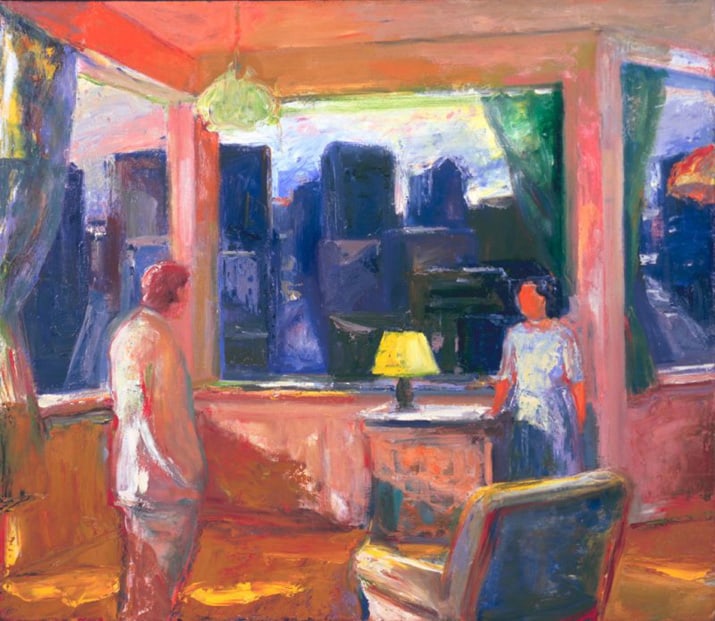
Elmer Bischoff
We Buy Elmer Bischoff Paintings And Drawings
Click To Get A Valuation Of Your Elmer Bischoff Painting. You’ll get a confidential fair market valuation of your painting and its marketability. We pay cash for paintings by Elmer Bischoff and take consignments to the gallery.

Elmer Bischoff Painting Style (1969)
(Courtesy FAMSF)
Elmer Bischoff Biography
Elmer Bischoff (1916-1991)
Elmer Bischoff paintings are quickly recognized by those familiar with his soft tonal palate, exquisite use of light and shade and sensitive portrayal of people. A dedicated artist and teacher from a young age, Bischoff earned an M.A. from University California Berkeley. He then went straight into teaching at Sacramento High School. There he taught jewelry craftsmanship, ceramics and other crafts to, in his own words “mostly housewives”. Many Bay Area artists of the time sustained themselves and their families with teaching jobs. It was a way of expressing art, earning money and learning through teaching.
Having grown up in a household that understood the value of culture, Elmer Bischoff had access throughout his childhood to music, painting and the arts. This early set of influences put him on the path that led to his success as a pedagogue and as an artist, achieving renown during his lifetime and a legacy that continues to this day.
Bischoff’s early inspiration was Pablo Picasso and he spent a great deal of time painting in Picasso’s style when he was young. It was later, during his time at UC Berkeley, that he began to branch out and expand his repertoire.
When the United States joined the War in 1941, Elmer Bischoff went to work as an intelligence officer in the Army and served in England. On war’s end he came back to the U.S. and in 1946 he joined the California School of Fine Arts as a member of the faculty. He met Mark Rothko and Clyfford Still there. It was here he got to know and befriend the Abstract Expressionists who were developing their movement. This included Frank Lobdell, David Park, Richard Diebenkorn and Hassel Smith. This burgeoning art form was a huge influence on Bischoff with their revival of the long neglected study of the figure. Along with Elmer Bischoff, these artists were given the title of the Bay Area Figurative School.
In 1952, Bischoff left the CSFA and also made a leap from the abstraction he had been practicing to a more figurative painting style. Unable or unwilling to find a job teaching like so many of his Bay Area contemporaries, he took up truck driving. He then used his spare time to sketch the people he encountered. He finally gained employment in 1953 at Yuba College, where he continued to develop his figurative style. It was during this period he had a successful solo exhibition at the CSFA, whom he rejoined as chair of the graduate school in 1956.
Bischoff’s teaching skills advanced and soon he was one of the most respected and admired teachers at CSFA. From 1963 until his death at the age of 75, he taught at UC Berkeley, taking on roles at several different schools and colleges as a visiting artist.
As an artist, Elmer Bischoff never achieved the commercial success of contemporaries like Willem de Kooning. Primarily because he had to support himself by teaching, yet he remains an influential figure in the Bay Area Figurative School.